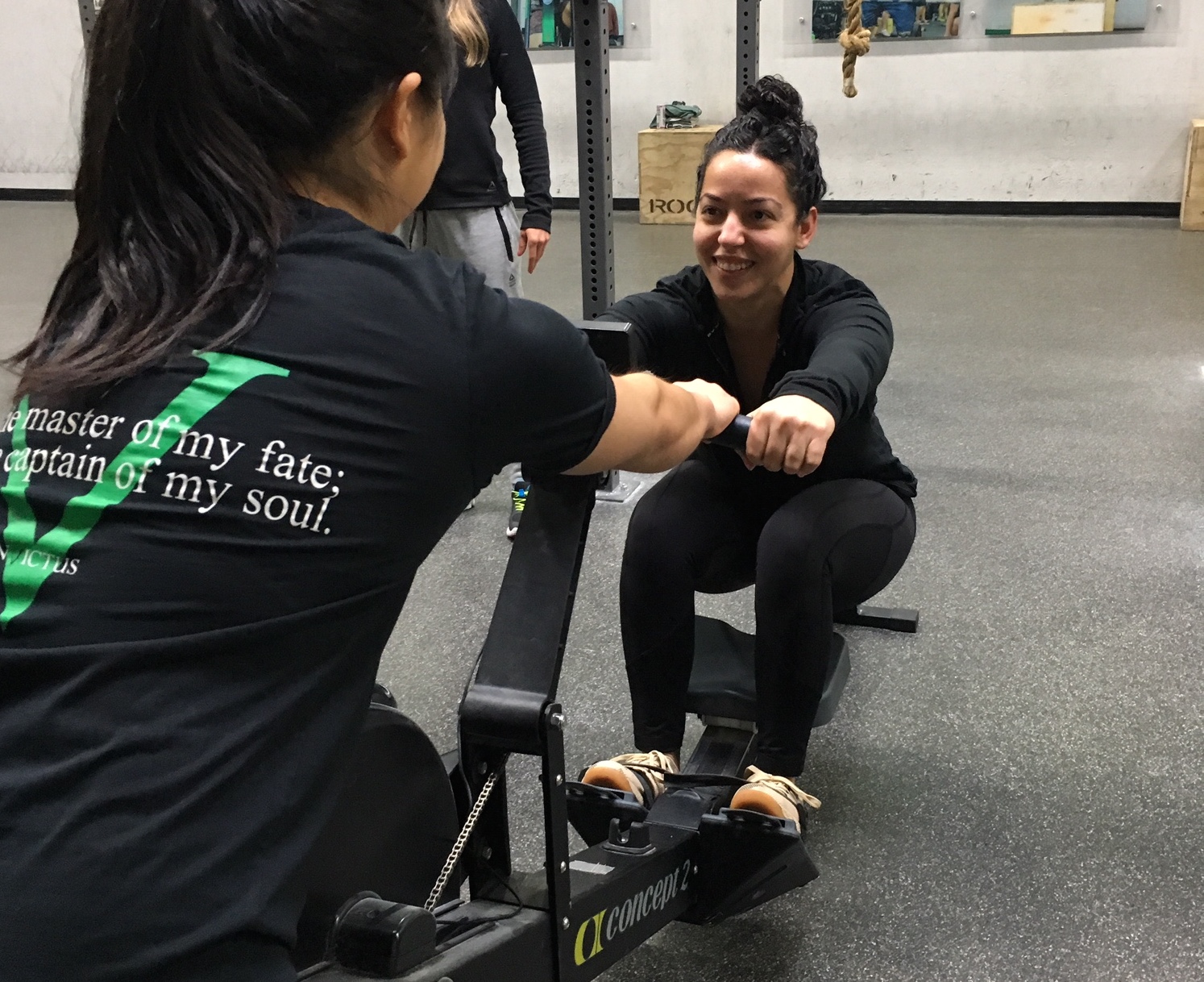
3 Tips for Improved Rowing Efficiency
Written by Kaitlyn Kassis
“Rowing will never be easy, but you can become more efficient.”
This was one of the opening statements made by collegiate rowing coach, Dave Cormier, at a rowing skill clinic hosted by Invictus Sorrento Valley. Dave also acknowledged in his initial brief to the group that rowing is often something that is overlooked by the majority of CrossFitters. It is often viewed as a means of getting from one movement to the next.
Most of us are guilty of just taking a seat and yanking away at the handle without considering what proper form entails. The meters and calories seem to tick away regardless of if we actually know what we are doing or not. However, if we want to gain a significant advantage both on how we perform on the erg and how we feel when we get off it to transition to the next movement, we need to do things properly – just like we do when we perform a heavy lift or a gymnastics movement!
Here are 3 Tips that you can focus on to help improve your rowing technique and efficiency:
1. DRIVE (Don’t Pull!)
Never call it a pull. The portion of the stroke where we go from catch (when you’re all the way forward in your stroke) to extension needs to be thought of as a LEG DRIVE, as opposed to an arm pull.
The drive through the legs should be so forceful against the erg that you can almost feel your butt pop up off the seat. In more precise terms, the force you push against the erg should take approximately 10-20 pounds off of the seat.
Just like we wouldn’t yank a deadlift off the ground with our arms, we need to initiate our movement on the rower with our legs. Our arms are simply there to guide that handle to out chest as we drive through the extension.
2. RELAX
Loose grip, loose upper body. We are often cued in running to relax our hands, and not clench them into fists. Tension in the upper body is not only a waste of energy, it also leads to improper positioning through the stride. The same theory applies to our grip and upper body on the erg. It is completely unnecessary to white-knuckle the handle.
Rather, it is more beneficial to keep a relaxed grip on the handle and let the thumbs hang down. In addition to a relaxed grip, it is also important to keep the shoulders and arms loose as well. If the arms are already tensed up, we are much more likely to revert to an upper pull than a lower body drive.
3. HINGE
This next point was a big “Aha!” Moment for a lot of us at the rowing clinic. When you have fully extended through the drive, and are about to begin the recovery portion of the stroke, think butt back first.
Before the recovery is initiated, the seat should actually slide backwards just slightly before it begins to slide forward. This motion can be thought of as the same sort of hinge pattern you see in a hang clean – it even serves the same purpose! Pushing your butt back first loads the hamstrings through the recovery, which sets you up for a powerful and explosive drive.
Efficient recovery + powerful drive = SUCCESS!
Keep these cues in mind the next time you hop on the erg in a workout, and become cognizant of your movement patterns as you row. Chances are there is something small you can tweak that will make your time spent on the rower much more efficient – and maybe even more enjoyable! (No guarantees on that one though.)